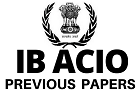sponsored links
Importance of Data Interpretation & Analysis for SBI PO
 Being a Probationary Officer in SBI, you should work with statistical data (be it daily deposit figures, daily withdrawal or advances figures, financial performance or productivity etc.). Of-course, not even a single day passes without coming across this data. So, it is your duty to present it in a concise and precise manner so that managers can study it in the least time; thus facilitating faster decision making. So the SBI wants you to be experts in this area.
Being a Probationary Officer in SBI, you should work with statistical data (be it daily deposit figures, daily withdrawal or advances figures, financial performance or productivity etc.). Of-course, not even a single day passes without coming across this data. So, it is your duty to present it in a concise and precise manner so that managers can study it in the least time; thus facilitating faster decision making. So the SBI wants you to be experts in this area.
When ever we hear the word Data Interpretation, we simply imagine
a table with some random numbers. But guys, there are a number of ways to represent data in Data Interpretation.
Types of Data Interpretation Questions you can expect for SBI PO Exam
- Bar Diagrams : These are of Three types. Those are,
- Simple Bar Diagrams : This is a two dimensional graphic representation of the data. Here, the rectangles of bars can be either vertically or horizontally positioned. This is the simplest and basic model of Data Interpretation. Now a days they are not asking these type of basic questions. Read a simple example of Bar Diagrams from here.
- Multiple Bar Diagram : This is also same as Bar Diagrams. But the difference is, here we have to work with multiple bars. You can expect one or two questions from this type in your SBI PO Exam. Check a small example of Multiple Bar Diagram from here.
- Sub divided / Component Bar Diagrams : This is the most typical among the three. In this the magnitude (or bar) is divided into different parts or components. These are little hard to understand and analyze. Luckily they are not asking these type of questions in your exam. Check a small example of Sub divided / Component Bar Diagram from here.
- Line Graphs : The line graph displays information in a series of data points connected by some straight line segments. It can also subdivided into Single Lined and Multiple Line graphs. Check a small example of Line graph from here.
- Pie Chart : In these type of charts, the data is represented in the form of Sectors of a Circle. The length of each sector is proportional to the quantity it represents. To represent the data in ratios / percentages, we use these type of charts. Have a look at a small example of Pie chart from here.
- Tables : This is the normal representation of the data. Almost all of us use this method to represent our data. Here the data is given in the form of rows and columns. When we need to divide the given data into parts and sub-parts, we use tables. Check a small example problem of Tabular representation from here.
- Paragraphs : Apart from above mentioned types, they may give the data in paragraph format too. For example, they may give the details of various news paper readers in a town / students who have registered for various courses and ask questions accordingly. For these type of questions, it is advisable to make your own table before you proceed further so that you can avoid unnecessary confusion.
- Mixed Graphs : Instead of giving the data in any of the above mentioned formats, some times they may mix two to three formats. For example, Table-Line Graph, Table-Pie chart, Line Graph-Bar Diagram etc. In these type of situations you should understand the relationship between those groups before solving the problem.
- Radar Graphs : This is the new form of Data Interpretation. They have been asking questions from Radar Graphs from last year.
Now lets have a look at a few tips to solve Data Interpretation questions.
Tips to solve Data Interpretation Questions of SBI PO Exam :
- Observe & Understand :
- You should get the detailed idea of the given graph / data before going to solve it. NEVER try to solve it without completely reading and understanding it.
- Don't try to solve the question with half knowledge. As every question is interrelated, don't try to start unless you have enough information (procedure & formulas etc.) to solve all the questions given in the set. Start only if you have the complete knowledge on the process or else you may end up with half baked answer which may cost your valuable time and marks.
- Avoid Confusion :
- Most of us don't consider the units while solving the given problem. Check the units properly (Grams, Kilograms, Tones, Meters, Centimeters Etc). Some times you may have to convert the values of one unit into another before performing your calculations. SBI often try to mislead people with tricky information. You may end up with wrong answers if you neglect these units.
- Check the legend properly. If it is a graph, then check X and Y axis properly.
- Avoid Usage of Pen & Paper : Don't try to put every single line of information on Paper. Develop your mental calculation skills and try to solve simple problems in your mind. It may sound weird but you can easily achieve this stage with two weeks of practice. So practice more.
- Check the given options : Some times you can easily pick the correct answer without solving the complete question with a simple glance at the given answer options. So check the answers before going to solve the question.
- Focus on Quality than Quantity : Nobody expects you to solve all the questions in Data Interpretation. Don't take risks. Don't mess-up things by attempting all the questions (of-course you can if you have enough time and knowledge). Focus more on speed and accuracy.
What Topics should I focus on ?
The main advantage of Data Interpretation section (this advantage is for SBI, not for you :P ) is you can turn any topic into a DI question. So, it is better go have a good knowledge on all the Quantitative Aptitude topics. But its better to focus on the following topics more.
- Speed Math Calculating techniques
- Simplifications
- Percentages
- Averages
- Profit / Loss
- Ratios
- Simple / Compound Interest
- Probability
- Permutations & Combinations
Example Problems of Data Interpretation for SBI PO Exam (with Explanations)
That's all for now friends. Hope you've got a clear idea on DI section of SBI PO Exam 2014 now. Happy Reading :)
sponsored links










 English Vocabulary from
English Vocabulary from











great information madam, thanks a lot
ReplyDeleteExcellent way of teaching. Waiting for remaining lessons :)
ReplyDeleteMam please please help with paragraph type d.I questions as they are very confusing and in ibps po ||| d.I were very tough part
ReplyDeletethank you mam.its really very helpful.
ReplyDeletethis site is really helpful. thanks a lot
ReplyDeletethanks
ReplyDeletegood information thank u
ReplyDeleteGreat work Team. Thank U so much .
ReplyDeleteThank U
ReplyDeleteGreat work Team. Thank U so much
ReplyDeleteThankyou for such a relevant information.
ReplyDeleteProvide Some Questions On Theses Topics... Thanks
ReplyDeleteThanks a lot Shivani. Was really looking out for tips on this topic. Awaiting some more posts and practice problems on the same. Thanks again..
ReplyDeleteHello Sir/Madam,
ReplyDeleteItz very good. But plz post as PDF. Then it will bevery helpful for us. Else please provide the copy option alone. Plz help us.
Thanq so much
ReplyDeleteThanq
ReplyDeleteGreat work by ur team.thanx
ReplyDeleteMam plz do tell us some shortcut techniques...it wil b realy helpful for our calculation part bcz in my case i take too much tym in solving n i m not vefy much familiar of calculating no.s by mind trick
ReplyDeleteHi mam
ReplyDeleteHow to rememver the points in the general awareness section plz help me mam
thank you very much
ReplyDeletethank you mam
ReplyDeleteThank you for sharing with us .. keep going
ReplyDeleteMa'am, the question i have solved from various books and currently present on different sites for data interpretation is not upto the level of the questions the sbi has been asking for last two exams i.e SO and PO.They are very complex as compare to the preious patterns.Mam could you please provide us question on complex DI and DA. It would be very helpul of you.Thnaks for the rest of the material u have been providing here for us.
ReplyDelete